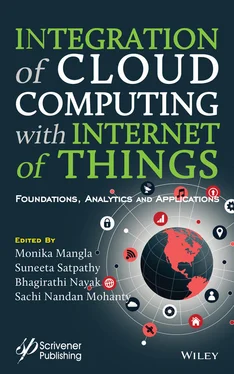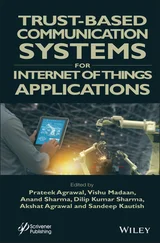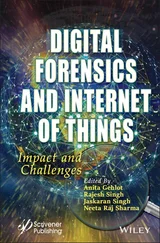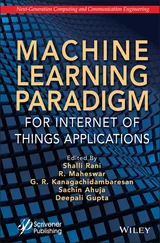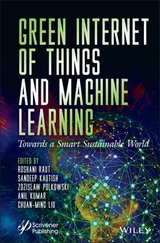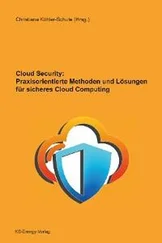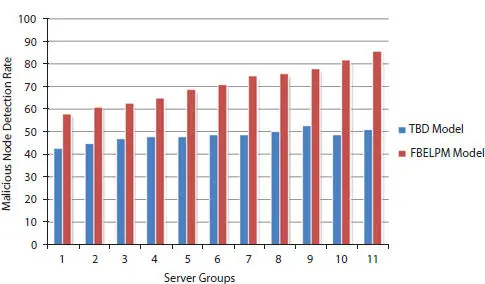
Figure 3.8Malicious node detection rate.

Figure 3.9Fog computational security levels for data storage.
Fog computing is viewed because the most reasonable edge computing stage for IoT systems and applications. As it had been primary declared by Cisco as a kind of edge computing and an expansion of the cell edge computing, explores and examines are created to interrupt down, characterize, improve and incorporate Fog computing. Numerous works that consider Fog computing for IoT are directed; either without the arrangement of SDN innovation or with SDN. Joining the online of things and fog computing, this paper proposed an IoT-based fog computing model and depicted the model in layers. We talked about the elevated level engineering of Fog computing and its advantages for the plan and advancement of IoT applications. Since IoT applications are profoundly powerful in nature and include a lot of observing and investigation exercises, we have thought that it was useful to design these applications by utilizing a few ideas and models from the self-versatile and autonomic frameworks. As an underlying advance to address this issue, in the proposed work, a fog based model for Secured applications and shows the useful importance and centrality of such a structure. The relentless association of convenient and sensor devices is making another condition specifically the Internet of Things (IoT), which engages a wide extent of future Internet applications. In this work, an exceptional Fog Based raised level programming model for delicate applications that are geospatially flowed, colossal degree. The fog enlisting framework gives the model to administer IoT benefits in the fog prospect by techniques for an authentic demonstrating position.
1. Liu, J., Liu, F., Ansari, N., Monitoring and analyzing big traffic data of a large-scale cellular network with Hadoop. IEEE Netw ., 28, 4, 32–39, 2014.
2. Chiang, M. and Zhang, T., Fog and IoT: an overview of research opportunities. IEEE Internet Things J ., 3, 60, 854–864, 2016.
3. Lakshmi Patibandla, R.S.M., Kurra, S.S., Kim, H.-J., Electronic resource management using cloud computing for libraries. Int. J. Appl. Eng. Res ., 9, 18141–18147, 2014.
4. Bagula, A., Mandava, M., Bagula, H., A Framework for Supporting Healthcare in Rural and Isolated Areas. J. Netw. Commun. Appl ., 120, 17–29, 2018. https://doi.org/10.1016/j.jnca.2018.06.010
5. Patibandla, R.S.M.L., Kurra, S.S., Mundukur, N.B., A Study on Scalability of Services and Privacy Issues in Cloud Computing, in: Cloud computing and Internet Technology, ICDCIT 2012. Lecture Notes in Computer Science , vol. 7154, R. Ramanujam and S. Ramaswamy (Eds.), Springer, Berlin, Heidelberg, 2012.
6. Tarakeswara Rao, B., Patibandla, R.S.M.L., Murty, M.R., A Comparative Study on Effective Approaches for Unsupervised Statistical Machine Translation, in: Embedded Systems and Artificial Intelligence. Advances in Intelligent Systems and Computing , vol. 1076, V. Bhateja, S. Satapathy, H. Satori (Eds.), Springer, Singapore, 2020.
7. Hosseinian-Far, A., Ramachandran, M., Slack, C.L., Emerging Trends in Cloud Computing, Big Data, Fog Computing, IoT and Smart Living, in: Technology for Smart Futures , pp. 29–40, Springer International Publishing, Cham, Switzerland, 2018.
8. Cui, L., Yu, F.R., Yan, Q., When big data meets software-defined networking: SDN for big data and big data for SDN. IEEE Netw ., 30, 58–65, 2016.
9. Ateya, A.A., Muthanna, A., Gudkova, I., Abuarqoub, A., Vybornova, A., Koucheryavy, A., Development of Intelligent Core Network for Tactile Internet and Future Smart Systems. J. Sens. Actuator Netw ., 7, 1, 2018.
10. Panarello, A., Tapas, N., Merlino, G., Longo, F., Puliafito, A., Blockchain and IoT Integration: A Systematic Survey. Sensors , 18, 2575, 2018.
11. Banafa, A., IoT and Blockchain Convergence: Benefits and Challenges, in: IEEE Internet of Things , IEEE, Piscataway, NJ, USA, 2017.
12. Peter, H. and Moser, A., Blockchain-Applications in Banking & Payment Transactions: Results of a Survey. Eur. Financial Syst ., 2017, 141, 2017.
13. Uddin, M., Mukherjee, S., Chang, H., Lakshman, T.V., SDN-based Multi-Protocol Edge Switching for IoT Service Automation. IEEE J. Sel. Areas Commun ., 36, 2775–2786, 2018.
14. Alliance, N.G.M.N. 5G White Paper; Next Generation Mobile Networks: Frankfurt, Germany, 2017.
15. Ateya, A.A., Muthanna, A., Koucheryavy, A., 5G framework based on multi-level edge computing with D2D enabled communication, in: Proceedings of the 2018 IEEE 20th International Conference on Advanced Communication Technology (ICACT) , Chuncheon-si Gangwon-do, Korea, 11–14 February 2018, pp. 507–512.
16. Azimi, I., Anzanpour, A., Rahmani, A.M., Pahikkala, T., Levorato, M., Liljeberg, P., Dutt, N., HiCH: Hierarchical Fog-assisted computing architecture for healthcare IoT. ACM Trans. Embed. Comput. Syst ., 16, 174, 2017.
17. Borcoci, E., Ambarus, T., Vochin, M., Distributed Control Plane Optimization in SDN-Fog VANET. ICN , 2017, 135, 2017.
18. Sharma, P.K., Chen, M.Y., Park, J.H., A software defined Fog node based distributed blockchain cloud architecture for IoT. IEEE Access , 6, 115–124, 2018.
19. Khakimov, A., Muthanna, A., Muthanna, M.S.A., Study of Fog computing structure, in: Proceedings of the 2018 IEEE Conference of Russian Young Researchers in Electrical and Electronic Engineering (EIConRus) , Moscow, Russia, 29 January–1 February 2018, pp. 51–54.
20. Rofie, S.A., Ramli, I., Redzwan, K.N., Hassan, S.M., Ibrahim, M.S., OpenFlow Based Load Balancing for Software-Defined Network Applications. Adv. Sci. Lett ., 24, 1210–1213, 2018.
1 *Corresponding author: lakshmanv58@gmail.com
2 †Corresponding author: patibandla.lakshmi@gmail.com
Конец ознакомительного фрагмента.
Текст предоставлен ООО «ЛитРес».
Прочитайте эту книгу целиком, купив полную легальную версию на ЛитРес.
Безопасно оплатить книгу можно банковской картой Visa, MasterCard, Maestro, со счета мобильного телефона, с платежного терминала, в салоне МТС или Связной, через PayPal, WebMoney, Яндекс.Деньги, QIWI Кошелек, бонусными картами или другим удобным Вам способом.
